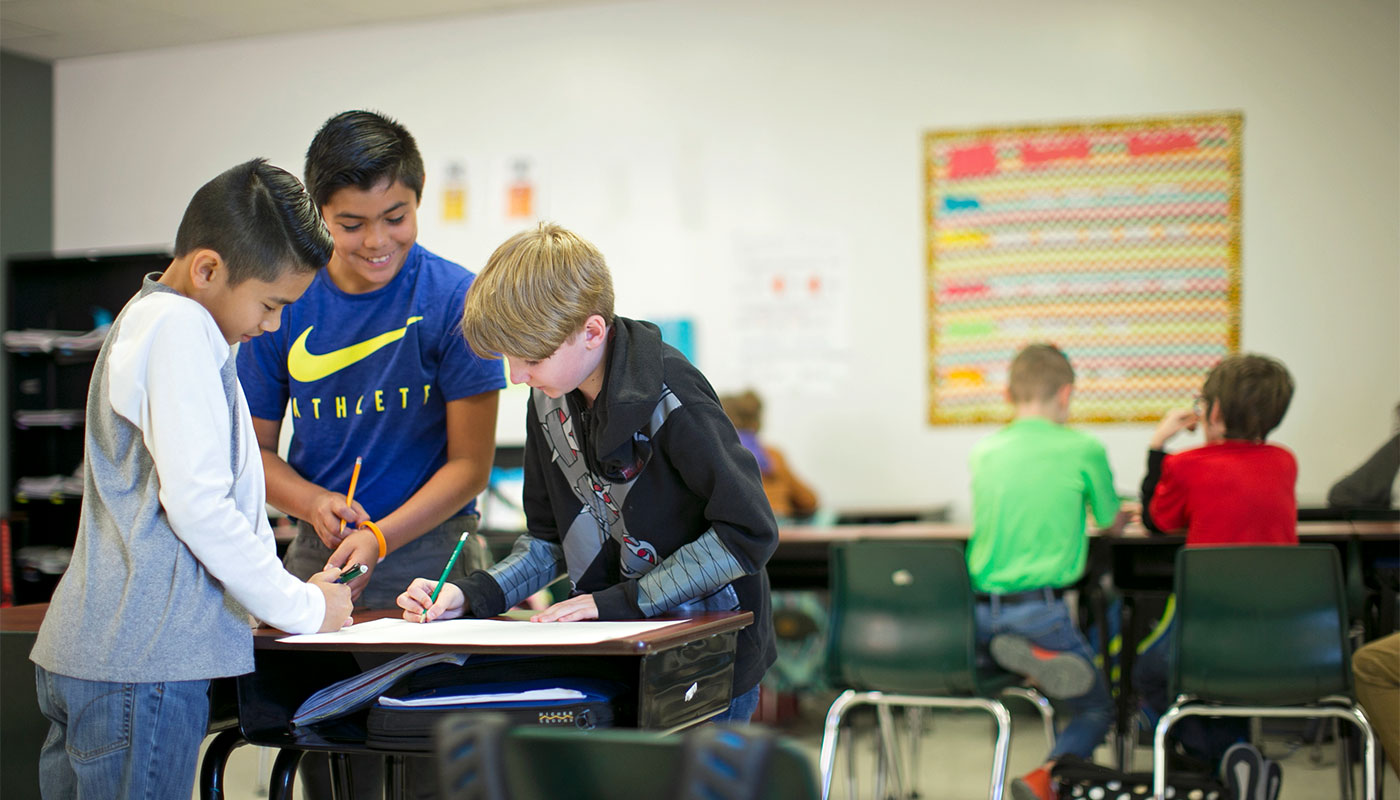
Step into a classroom participating in the Kansans Can School Redesign Project, and you might see students collaborating on a history project, planning a presentation with their peers, or conferring one-on-one with their teachers, building strong relationships in the process. That’s because several Kansas schools are embarking on a journey to redesign the learning experience to help ensure that students are ready to succeed after graduation.
“Employers want somebody who can think and navigate through a dynamic system, read the environment and make adjustments, manage their own time, and who see themselves as part of the system,” Twin Valley Unified School District board member Jeremiah Van Doren said in an interview with The Salina Journal.
With this goal of equipping students with skills that they’ll need throughout their lives, a handful of Kansas schools in communities like Wellington, Bennington, McPherson, and Newton have chosen to implement Summit Learning to support their redesign efforts. With about eight months of implementation under their belt, educators in these schools are already seeing the positive impact of the approach on their students.
Students are making rich connections across subject areas with real-world projects
Today’s students will have to tackle complex societal issues, and these issues won’t operate in single-subject siloes — they’ll require young people to apply integrated knowledge of multiple subjects, such as math, science, and social studies.
Students in Kansas are applying their skills and knowledge through Summit Learning’s collaborative, real-world projects. For example, at Bennington Junior High / High School, eighth graders recently worked together to design and build games that demonstrate Newton’s First Law. At Santa Fe 5/6 Center in Newton, sixth graders learned about the Revolutionary War by creating trading cards, and they honed their observation skills in a crime scene investigation activity. While these projects are fun for the students, they also serve to develop cognitive skills, such as collaboration, communication, and critical thinking.
“We kind of kept coming back to skills that will help them when they graduate high school and they’re out into the work force — being able to work as a team, being able to overcome a problem that maybe doesn’t have an easy solution,” Jennifer Duncan, a sixth grade teacher at Santa Fe 5/6 Center, told The Kansan newspaper.
Students are empowered to learn how they learn best
Teachers say that Summit Learning encourages students to develop important self-direction skills that will help them succeed as adults. As students work their way through content at their own pace, they can go back and improve their understanding of content that they struggled with — rather than just moving on with the rest of the class and leaving a gap in their knowledge. “They can correct stuff from August all the way until the end of the year. So, any grade they don’t like they can go back and change it,” said Kirstyn Pracht, a sixth grade teacher at Santa Fe 5/6 Center.
This ability for each student to spend more time learning and improving where he or she needs mirrors college and the workplace — where they can’t just move on if they don’t know something. It also helps students better understand their own learning style and seek out an approach that meets their needs. “They know what works best for them, so as they progress in education they are more familiar and they’re not having to learn it as they’re in college, how they learn best,” Stacey Campbell, a freshman science teacher at Field Kindley High School in Coffeyville, told KSN-TV.
Students spend most of their time building relationships with teachers and classmates — not with screens
One-on-one mentoring is a core component of Summit Learning, and the Kansas schools are making mentoring a key part of their redesigned classrooms. As Jenny Vernon, an eighth-grade teacher at McPherson Middle School, explained, “We have dedicated time to mentor students and help them set goals for learning.” During this time, the students work with their mentor on setting and working toward short-term and long-term goals. Educators also get to know students deeply and build strong relationships with them through mentoring.
With the focus on relationship-building — as well as real-world projects — students only have “limited screen time,” according to an article in The Kansan. According to Chris Allen, principal of Eisenhower Elementary School in McPherson, echoed this, noting, “In a typical day, you’re going to see the majority of the day focused on projects.”
Teachers and students are learning in new ways
While it’s still early in the implementation of Summit Learning in these Kansas schools, there are some promising signs of progress and success. For example, at Bennington Junior High / High School, attendance is up, and the number of failing semester grades declined 46% compared to the same period last year. Students say they feel a sense of accomplishment and empowerment about their learning—and they feel in control of their future.
In addition, Summit Learning is helping the Kansas teachers develop in their profession. The Summit Learning Program supports them in implementing this new approach through trainings throughout the year, and teachers are already noticing positive changes in their practice. As Jennifer Bartlett, a fifth-grade teacher in Bennington, put it, “I feel like it has made me a better teacher, because I am constantly looking at where kids are at and reflecting on how to meet their needs. I feel like I am doing a lot more planning, reteaching, and meeting individual student needs.”
As these schools continue their journey with Summit Learning and school redesign — and as more schools around the state join them — they’re redefining what education in Kansas looks like and how Kansas students are prepared for the future.

